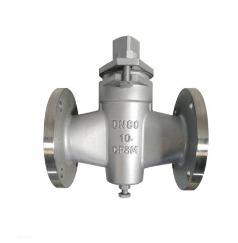Understanding the Functionality and Benefits of Flanged Gate Valves in Piping Systems
Understanding Flanged Gate Valves Design and Application
Flanged gate valves are essential components in various industrial applications, primarily used to control the flow of liquids and gases in piping systems. Their design features an integrated flange that allows for easy attachment to pipes, ensuring a strong and leak-proof connection. The flanged design simplifies installation and maintenance, making it a popular choice in many sectors, including water treatment, oil and gas, and chemical processing.
The primary function of a gate valve, including flanged gate valves, is to provide a straight-line flow path. When the valve is fully opened, there is minimal pressure drop and turbulence, which is ideal for applications requiring a controlled flow. Unlike other types of valves, such as ball or globe valves, gate valves operate by raising or lowering a gate (or wedge) to start or stop fluid flow. This mechanism is particularly useful in applications where a complete shut-off is necessary.
Flanged gate valves are available in various materials, including cast iron, stainless steel, and bronze, each chosen based on the specific requirements of the application, such as temperature and pressure conditions. The choice of material is critical to ensure the valve's durability and efficiency over time. Additionally, flanged gate valves can be customized with different sealing materials, such as PTFE or rubber, to enhance their performance under varying environmental conditions.
flanged gate valve

One of the key advantages of flanged gate valves is their ability to handle high pressures and temperatures, making them suitable for challenging industrial environments. Their robust construction and reliable sealing capabilities reduce the likelihood of leaks, which is crucial for maintaining safety and efficiency in operations.
Installation of flanged gate valves is relatively straightforward. The flanges are aligned with the corresponding pipe flanges, and the two are secured together using bolts. This ease of installation is particularly beneficial in large-scale projects, reducing both time and labor costs. Furthermore, regular maintenance of flanged gate valves is uncomplicated. They often come with a handwheel for manual operation and can be visually inspected for any signs of wear or damage, ensuring they operate effectively.
In conclusion, flanged gate valves are a vital component in fluid control systems across various industries. Their design, material versatility, and ease of installation make them ideal for applications requiring reliability and performance. Understanding these valves' characteristics and functionality can help engineers and technicians make informed choices that enhance operational efficiency and safety in their respective fields.
-
The Key to Fluid Control: Exploring the Advantages of Ball Valves in Industrial SystemsNewsJul.09,2025
-
The Versatile World of 1, 2, and 3 Piece Ball ValvesNewsJul.09,2025
-
Stainless Steel Ball Valves: The Ideal Choice for Efficient Flow ControlNewsJul.09,2025
-
Optimizing Fluid Control with Ball Float ValvesNewsJul.09,2025
-
Manual Gate Valves: Essential for Control and EfficiencyNewsJul.09,2025
-
Everything You Need to Know About Butterfly ValvesNewsJul.09,2025
-
The Versatility of Wafer Type Butterfly ValvesNewsJul.08,2025




